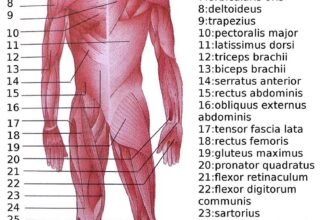The lunate bone is one of the eight carpal short bones a crescent-shaped structure situated in the center of the proximal row of the carpal bones of the hand between the lateral scaphoid and medial triquetrum and works closely with the two forearm bones (lie between the radius and ulna) to help the wrist move. The name of the lunate bone comes from the “crescent-shaped” (Latin: lunatus), from Latin luna (“moon”), semilunar bone, and from the bone’s resemblance to a crescent moon. It sits medially to the scaphoid bone, superior to the capitate bone, and lateral to the triquetral bone, and comes into contact with the hamate bone at its inferior medial angle. The lunate articulates with five bones that are the radius proximally, capitate and hamate distally, scaphoid laterally, and triquetrum medially.
The lunate is stabilized by a medial ligament to the scaphoid and a lateral ligament to the triquetrum. Ligaments between the radius and carpal bone also stabilize the position of the lunate, as does its position in the lunate fossa of the radius.

Surface
- The proximal surface of the lunate bone is smooth and convex, abuts the radius articulating with the radius.
- The lateral surface is flat and narrow in shape, with a crescentic facet for articulation with the scaphoid bone.
- The medial surface possesses a smooth with the triquetral, and quadrilateral facet for articulation with the triquetral.
- The palmar surface is rough, as is the dorsal surface.
- The dorsal surface is broad and rounded.
- The distal surface of the bone is deep and concave in shape and articulates distally with the capitate bone.
- The lunate also articulates on its distal and medial surface with the hamate bone.
These 8 bones are named for their unique shapes; Scaphoid (boat), Lunate(Crescent), Triquetrum(3-cornered), Pisiform(pea), Trapezuim(Table), Trapezoid(quadrilateral), Capitate(head shaped), and Hamate (hook-shaped).

References






